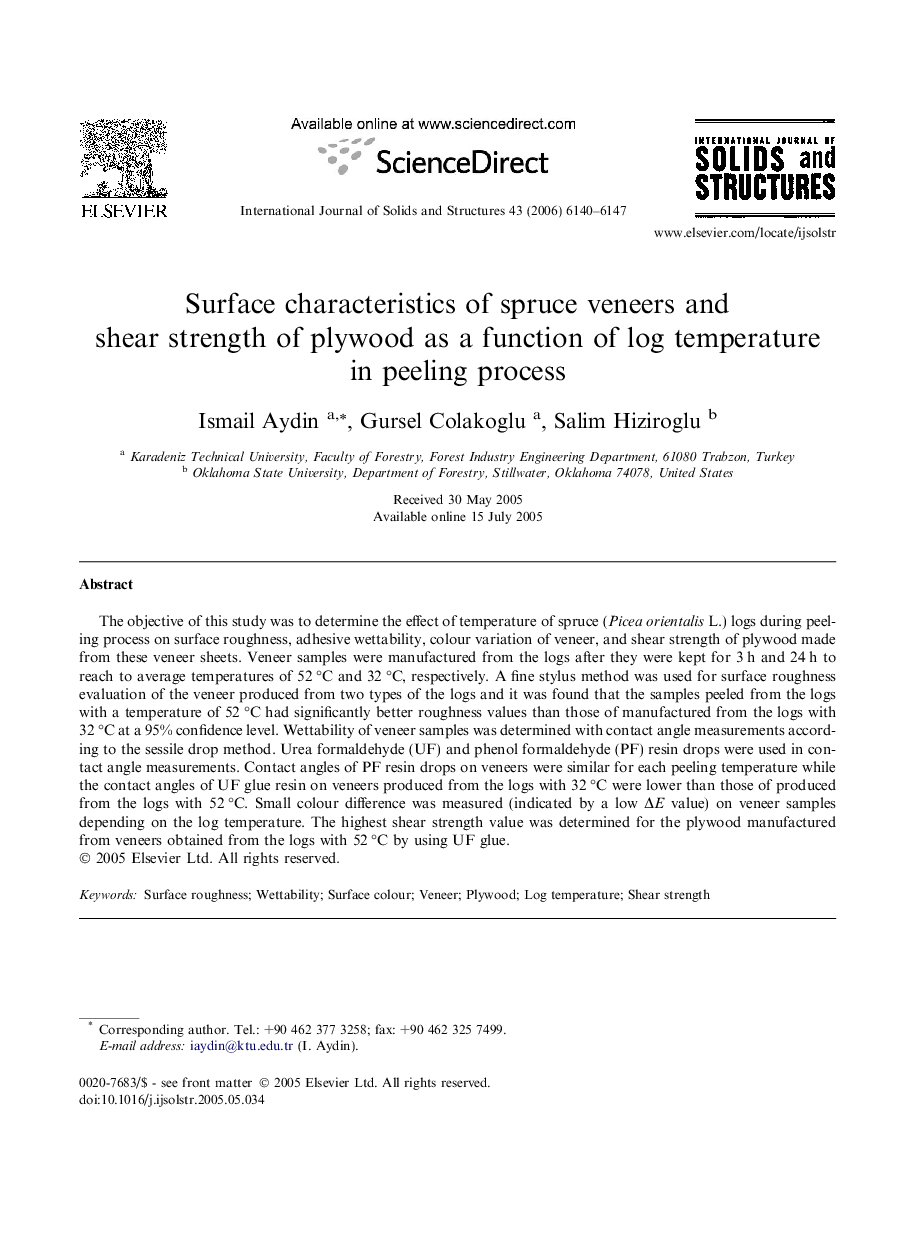| Article ID | Journal | Published Year | Pages | File Type |
|---|---|---|---|---|
| 280120 | International Journal of Solids and Structures | 2006 | 8 Pages |
The objective of this study was to determine the effect of temperature of spruce (Picea orientalis L.) logs during peeling process on surface roughness, adhesive wettability, colour variation of veneer, and shear strength of plywood made from these veneer sheets. Veneer samples were manufactured from the logs after they were kept for 3 h and 24 h to reach to average temperatures of 52 °C and 32 °C, respectively. A fine stylus method was used for surface roughness evaluation of the veneer produced from two types of the logs and it was found that the samples peeled from the logs with a temperature of 52 °C had significantly better roughness values than those of manufactured from the logs with 32 °C at a 95% confidence level. Wettability of veneer samples was determined with contact angle measurements according to the sessile drop method. Urea formaldehyde (UF) and phenol formaldehyde (PF) resin drops were used in contact angle measurements. Contact angles of PF resin drops on veneers were similar for each peeling temperature while the contact angles of UF glue resin on veneers produced from the logs with 32 °C were lower than those of produced from the logs with 52 °C. Small colour difference was measured (indicated by a low ΔE value) on veneer samples depending on the log temperature. The highest shear strength value was determined for the plywood manufactured from veneers obtained from the logs with 52 °C by using UF glue.
